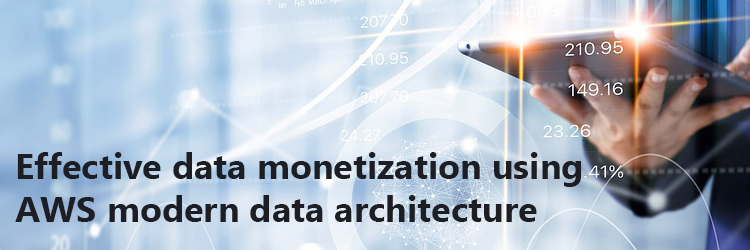
Businesses generate extensive amounts of data, ranging from customer interactions and market trends to internal operational metrics. However, this wealth of data is often underutilized, confined within silos, or obscured by complexity and sheer volume. As a result, organizations miss out on potential revenue opportunities. This raises an important question: How can we transform this data into tangible monetary value?
Value of Data
Data is growing at an exponential rate. In 2022, approximately 106 zettabytes of data were created and replicated. However, a significant challenge remains: 68% of organizations still struggle to extract value from their data, and only 28% have a data strategy. This highlights the urgent need for effective data monetization strategies.
Methods for monetizing data
Data can generate revenue directly and indirectly and should be viewed as a valuable asset. Like any physical equipment that requires regular maintenance to maximize its value, data can be managed and optimized to yield greater returns. Data monetization primarily takes two forms: direct and indirect. Currently, about one-third of organizations are generating external revenue from their data. Many businesses successfully use data for internal purposes, such as optimizing supply chains and improving customer service. Also, a new concept known as insights monetization is emerging. By leveraging customer data and operational insights, organizations can uncover new monetization opportunities, including market expansion and the creation of new services.
Build and monetize data products using AWS modern data architecture
What is a data product?
A data product has three dimensions: usability, viability, and feasibility. Usability focuses on whether the product can solve an end customer's problem. Viability examines if the product has commercial potential. Feasibility considers whether the product can be technologically achieved. The key point is the overlap between all three dimensions. This is where you build and monetize your data product. For example, U.S. climate flood risk data aggregates national and property-level information to adjust for flood risk models. This data provides a risk assessment of climate-related flooding for specific properties, allowing institutions to evaluate the risk factor for a given asset.
Examples of data products
Dashboards and Reports: These are visual representations of data that enable an understanding of key metrics and trends.
Data APIs: Application Programming Interfaces enable data exchange between software systems or between data producers and consumers.
Data Collection and Indexing: This process involves gathering data from various sources and organizing it so that it can be quickly accessed and analyzed.
ML model as a service: Develop your machine learning model and then monetize the model itself as a service.
Modern data architecture on AWS
A modern data architecture is fundamental to building data products. This architecture enables data integration from various sources and provides a framework for addressing critical questions that end users may have. A modern data architecture must acknowledge that there is no one-size-fits-all solution. It should be adaptable enough to integrate data from various sources, transform it, and ultimately generate actionable insights that meet the needs of end users.
A modern data architecture consists of three key aspects: integration, a comprehensive set of services, and governance. In this architecture, a data lake is centrally positioned, surrounded by databases and other specialized services. Data can be moved using integration services or Zero-ETL solutions. Data governance is then managed through tools like Amazon DataZone or AWS Lake Formation.
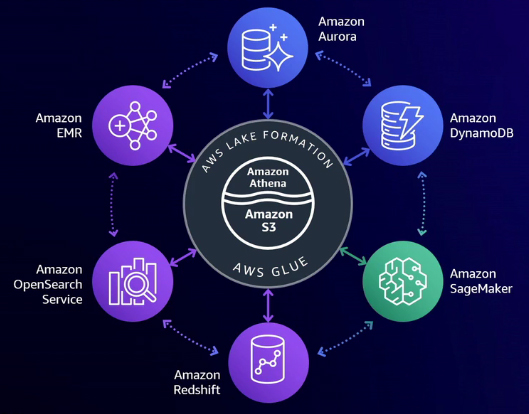
Data products reference architectures
Dashboard as a service
You can use available Zero-ETL features to integrate data, but if a data source is not supported, you may need to move the data to Redshift manually. For example, if your operational data is stored in Amazon Aurora, you can use Zero-ETL to integrate this data with Redshift. Once the data is in Redshift, you can use Amazon QuickSight to generate insights and share them with your customers.

Data API as a service
This approach allows you to offer programmatic access to your organization's data in a secure, manageable, and scalable manner. Customers can interact with the data without managing the complexities of the underlying storage and retrieval procedures. For example, a Person Enrichment API provides demographic, professional, and other details about individuals. This enables customers to integrate such services into their workflows.
REST Data API: REST Data APIs can be implemented using either a data warehouse or a data lake approach. In the data warehouse approach, you can use Zero-ETL features to make your operational data available in Redshift, which can then be used to power your APIs. Alternatively, the data lake approach involves storing and managing your data in a data lake. End customers can access and provide this data through an API Gateway.
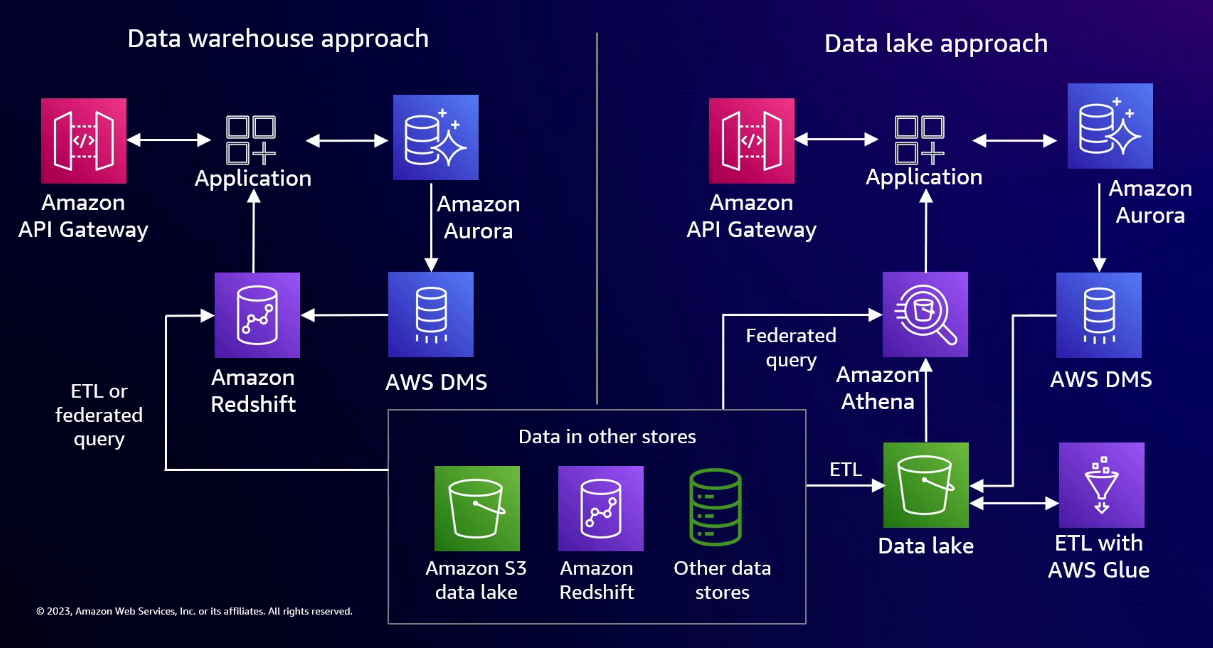
SQL Data API: If your customers need access to large volumes of data and prefer an alternative to HTTP APIs, an SQL Data API is a suitable option. For example, an SQL Data API allows efficient data access and ingestion if you have substantial genomic data linked with clinical data, which is crucial for healthcare analysis and research. In this scenario, data from Redshift can be made available in a customer's or siloed cluster and presented to end users through a Row-level security model, ensuring secure and controlled access.
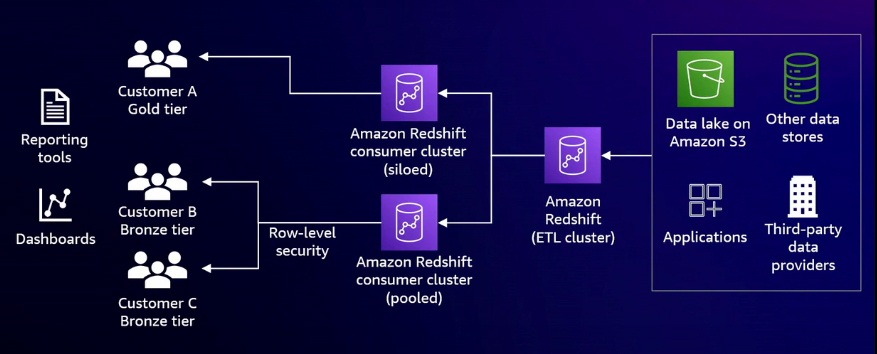
Analytics as a service
Behavioral analytics focuses on understanding when your customers interact with promotional content, which can create value. You can develop new products or generate tailored recommendations by analyzing customer behavior. Amazon Kinesis and Amazon OpenSearch can be used for real-time analytics.
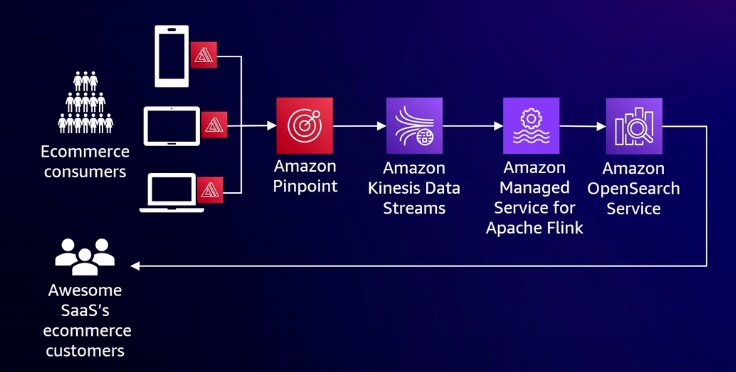
ML model as a service
Amazon Personalize can be used to deliver customized product recommendations for organizations lacking in-house machine learning expertise. It provides personalized insights that can reveal further monetization opportunities by integrating with your user behavioral data. Examples include customized messaging, targeted advertising, and tailored product recommendations.
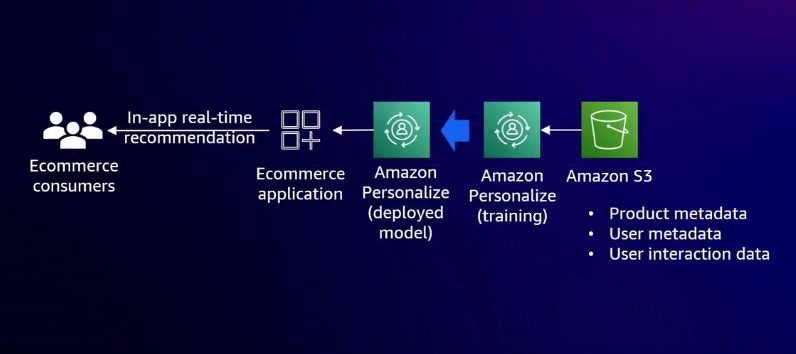
Data monetization using AWS Data Exchange
AWS Data Exchange
AWS Data Exchange simplifies the process of discovering and subscribing to third-party data in the Cloud. As a data producer, you can monetize your data by publishing your product on Data Exchange. This benefits both subscribers and data providers. AWS Data Exchange enables data providers to monetize their infrastructure for data storage, delivery, billing, and entitlement. Providers can use AWS to experiment, build, and deliver data products to their customers, offloading the heavy lifting. This allows providers to focus on building their products while AWS Data Exchange manages the underlying complexities.
AWS Data Exchange offers five different data integration options. One option involves ingesting your files into AWS Data Exchange for data files or the AWS Data Exchange for Amazon S3. For example, if data files are stored in an on-premises system, AWS can help you convert them into a product and publish them. The second option involves querying tables, with two options available. First, you can make your data accessible to customers through Amazon Redshift. Second, you can provide access to data stored in your data lake using AWS Lake Formation. By providing data through Lake Formation, customers can access it without needing to build ETL pipelines, allowing them to gain insights. The last option is Call APIs. With Data Exchange for APIs, customers can use the same authentication and authorization model for other AWS services, eliminating the need to integrate any additional identity providers to access these APIs.
How do you get started?
First, create an experimental project to assess your existing data assets and determine if they meet the three key dimensions: usability, feasibility, and viability. Once you have validated these aspects, develop your product and publish it to your customers using AWS Data Exchange. If you need assistance, AWS partners and professional services can help you get started.
Reference:
AWS re:Invent 2023







